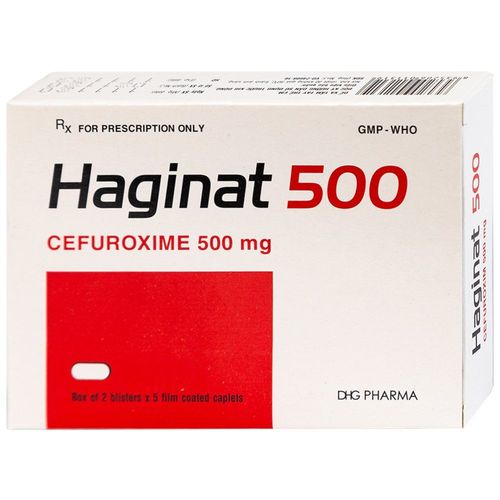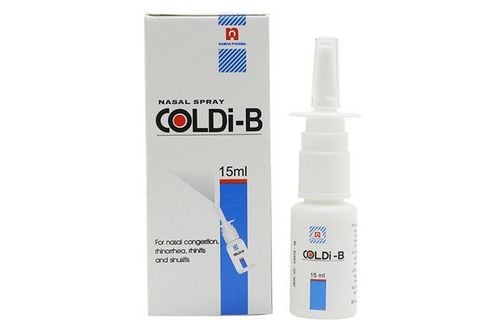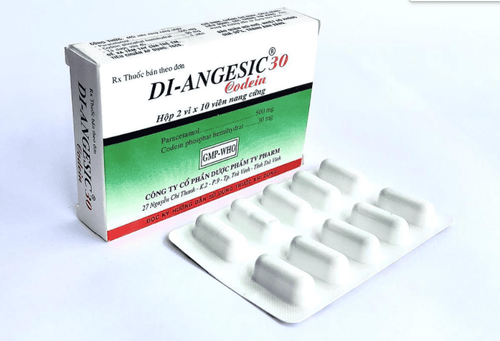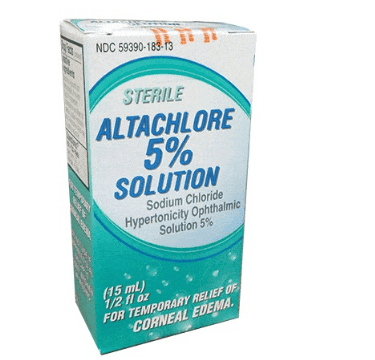This is an automatically translated article.
The article is professionally consulted by Th.S BS. Ngo Thi Oanh – Doctor of Pediatrics - Neonatology - Vinmec Ha Long International General Hospital
Childhood laryngitis is a rapidly progressive and potentially fatal bacterial infection caused by edema of the epiglottis. When organizing, the tissue around the epiglottis is inflamed, edematous, there is a risk of leading to epiglottitis ventilation obstruction and death. Symptoms include acute sore throat, difficulty swallowing, high fever, drooling, and difficulty breathing. Diagnosis requires endoscopic evaluation of the epiglottis, which is not done until a secure airway is available. Treatment includes airway protection and antibiotics.
1. What is epiglottitis?
Epiglottitis is a life-threatening infection of the epiglottis. The larynx is a leaf-shaped flap of cartilage that covers the windpipe and prevents food, drink, and anything else from going down the throat into the airways. At the pharyngeal junction, the epiglottis plays a very important role in regulating the passage of air into the trachea and the passage of food into the esophagus. Epiglottitis occurs when bacteria infect the epiglottis and other nearby tissues, causing them to swell to the point of obstructing the airways and obstructing breathing.
Laryngitis was first described in the 18th century but was only precisely defined for the first time by Le Mierre in 1936. Currently, the death of US president George Washington in 1799 is considered to be caused by laryngitis. In the past, epiglottitis was more common in children than in adults. This difference is thought to be due to the fact that the glottis opening is narrower in children than in adults. The trachea only needs to be slightly narrowed and the resistance of the airways will increase greatly, making breathing difficult. Since 1985, along with the mass vaccination against Haemophilus influenzae type b (HIB), the bacteria most often causing epiglottitis, the incidence in children has decreased significantly.
Hib epiglottitis has typical characteristics that only occur in children aged 2-7 years. However, it is most common in children 2-4 years old and in adults aged 20-40 years. Epiglottitis in children < 1 year of age is uncommon and occurs in only about 4% of cases.

Vi khuẩn Hib là nguyên nhân chủ yếu gây ra nhiễm khuẩn nặng ở trẻ nhỏ
2. What causes epiglottitis?
Several factors can cause the epiglottis to swell due to the causes of swallowing hot liquids (boiling water, hot food...), direct trauma to the throat and various infections . One of the most common causes of epiglottitis in children is infection with Haemophilus influenzae type b (Hib). Other causes can also come from the bacteria that cause pneumonia, meningitis, and infections in the blood. Epiglottitis is a disease that can occur at any age, including adults and children.
Previously, epiglottitis was most commonly caused by the bacterium Haemophilus influenzae type b (Hib). Once a common and dangerous condition for children aged 2 to 6 years old, epiglottitis is rare today, thanks to the introduction of a vaccine against Hib in 1988. Most babies now live. Now she is vaccinated against Hib periodically when she is 15 months old.
Very rare cases of epiglottitis today usually occur in children who have not been vaccinated and are not protected against Hib, or in children with weakened immune systems. Children with weakened immune systems are more susceptible to infections with other bacteria that can cause epiglottitis, such as pneumococcal or staph. Bacteria that cause illness in children and adults include Streptococcus pneumoniae, Staphylococcus aureus, H. influenzae, unspecified, Haemophilus parainfluenzae, β-hemolytic streptococci, Branhamella catarrhalis, and Klebsiella pneumoniae. H. influenzae type B is still a cause in unvaccinated adults and children.
Burns from hot drinks, ingestion of foreign bodies, trauma to the epiglottis and infection from chickenpox blisters are other causes of epiglottitis. Although epiglottitis can strike at any age, children are most at risk under 1 year of age.
3. What are the symptoms of epiglottitis?
Epiglottitis is usually acute but can develop within hours to days. The most common symptoms include sore throat, hoarseness, difficulty speaking, fever, painful swallowing, fast heart rate, trouble breathing
Sore throat: Within hours, your baby's throat will be so sore that he cannot swallow. and refused to eat. Fever: Your child will have a fever of 38.3oC or higher. Drooling: Even if a child normally drools a lot, but with epiglottitis, the child will have difficulty swallowing, so he will start drooling more. Abnormal breathing sounds: Your baby will make a high-pitched sound (called a wheezing sound) with each inhalation. The cry may sound like diphtheria, but the child will not have any symptoms of a cough. Difficulty breathing: When the epiglottis swells, it's difficult for your child to get air to the lungs.
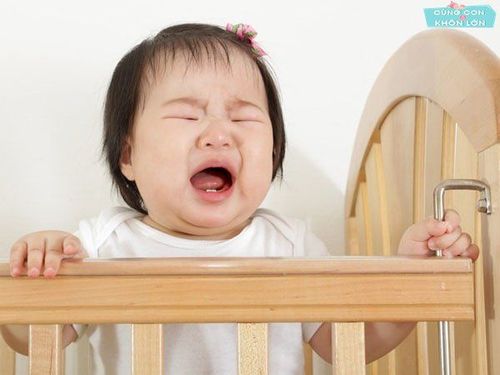
Viêm nắp thanh quản khiến cổ họng trẻ bị đau và có thể bị chảy dãi
4. What should you do when your child has epiglottitis?
Epiglottitis progresses rapidly, so don't try to wait. Call your child's doctor right away and call 911 if your child has trouble breathing or seems exhausted.
You should try to keep the child's mind as calm as possible. Have the child sit up straight - this will make it easier for the child to circulate air.
Do not try to examine the child's throat and do not force the child to lie down. If the doctor thinks your baby has epiglottitis, he or she will be taken immediately to the hospital for evaluation and treatment.
5. Evaluation and how?
If the diagnosis is inconclusive, the doctor may take an X-ray of your baby's neck to see if the epiglottis is swollen. Your baby may also need blood tests to check for bacterial infections.
Once the doctor is sure that your child has epiglottitis, the most immediate goal will be to keep your child's airway open. Children sometimes need invasive interventions such as anesthesia and intubation to ensure airway patency. Anesthesia allows the doctor to safely check and place a breathing tube through the swollen epiglottis into the child's airway.
Next, the child will be taken to the intensive care unit (ICU) and given intravenous fluids and antibiotics. Because of the discomfort, the child will likely continue to be sedated until it is safe to remove the breathing tube - that is, when the doctor feels certain the infection is under control and the swelling has subsided. so that the baby can breathe easily. This process usually takes two or three days.
In addition, if the child is detected early, treatment may include:
Steroids to reduce airway swelling Using aerosols to reduce airway edema Give fluids to ensure nutrition until the child can swallow again Injections antibiotics if the cause is a bacterial infection Other medications to treat the child's accompanying symptoms: fever, cough, runny nose, vomiting, diarrhea... How well the child will recover in relation to whether or not you get the child to the hospital quickly. Once the airway is secure and antibiotics and anti-inflammatory drugs are started, the epiglottis usually clears up from severe edema within 24 hours. Full recovery takes longer and depends on the child's condition.
After that, your baby may need to stay in the hospital for an extra day or two for intravenous fluids, antibiotics to kill bacteria, and anti-inflammatory drugs to help reduce swelling. When you bring your child home, you will continue to give him antibiotics to get rid of any bacteria that may be present in his or her body.
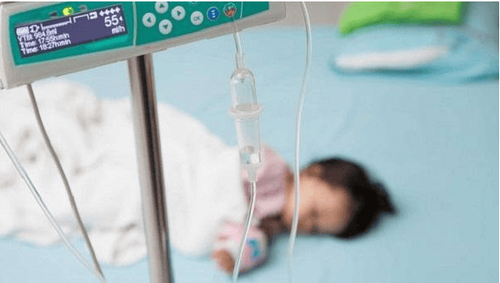
Nên sớm cho trẻ đến viện để thăm khám và chữa trị kịp thời
6. How can I prevent my child from getting epiglottitis?
Laryngitis is not contagious, but your child may be at risk for the bacteria that cause it if he or she gets it from the environment.
Epiglottitis caused by Hib bacteria can be prevented with a vaccine. After getting the vaccine, your child will have a lower chance of getting the disease. Other bacterial epiglottitis cannot be prevented at this time. To protect your child, make sure your child is vaccinated against Hib, chickenpox, and pneumococcal . And even if your child has been vaccinated, if you think he or she has been exposed to another infected child, call your doctor to see if you need to take any extra precautions. .
But such cases are quite uncommon. Of course, the Hib vaccine is not 100% safe for children. Therefore, it is necessary to take everyday preventive measures such as:
Do not let children share personal items with adults Teach children to wash their hands often and properly Use alcohol-based hand sanitizer if not available soap and water Enhance nutrition, improve children's resistance

Dạy trẻ rửa tay thường xuyên bằng xà phòng để ngăn ngừa nguy cơ mắc bệnh
7. Complications of epiglottitis
Epiglottitis can cause a number of dangerous complications in children, including respiratory failure and severe infections.
Respiratory failure . As mentioned above, the epiglottis is responsible for opening and closing the entrance of the trachea, preventing food and drink from entering the trachea when eating. Because of some cause of epiglottitis edema, the epiglottis becomes swollen due to infection or trauma. This leads to narrowing of the airways and possible complete obstruction of the airways. This can lead to respiratory failure, a life-threatening condition in which the level of oxygen in the blood drops dangerously low or the level of carbon dioxide becomes too high. Severe infection. Sometimes the bacteria that cause an infection cause epiglottitis elsewhere in the body, such as pneumonia, meningitis, or a blood infection (sepsis). Vinmec International General Hospital examines and treats common nasopharyngeal diseases, head and neck tumors, congenital malformations of the ear, nose and throat area with the most optimal internal and surgical methods for the disease. individuals, both children and adults. Coming to Vinmec International General Hospital, patients will receive a direct, dedicated and professional examination from a team of qualified and experienced medical staff.
Please dial HOTLINE for more information or register for an appointment HERE. Download MyVinmec app to make appointments faster and to manage your bookings easily.
Reference source: babycenter.com




